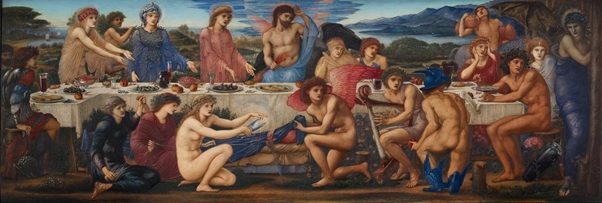Across all civilisations, myths are the shared stories and legends that bind us as a culture. Some of these myths and legends have had such a profound cultural or historical impact that they have spread far beyond their own native culture and influenced peoples around the world. Such is the case with Greek mythology, which has spread far beyond the Aegean Sea to influence cultures across the globe.
One of the most prevalent ways in which we encounter Greek mythology in modern society is via art. For thousands of years, the stories and characters that make up Greek mythology have been depicted in various ways by artists from many different cultures. The widespread influence of Greek mythology in art is a large part of the reason why it is important to learn about Greek mythology.

In order for art students to fully engage with a lot of the work that has been produced in Europe over the past thousands of years, it’s crucial to teach mythology. Learning Greek mythology means getting to grips with the major plots and characters contained within the story. Consulting free examples of these in a Greek mythology research paper and essays such as https://gradesfixer.com/free-essay-examples/greek-mythology/ is a great first step in how to become a mythologist. Investigating the stories contained within Greek mythology will allow you to understand the broader context of the artwork you encounter.
Having done your research into summaries of the topics from Greek mythology that most commonly pop up in artwork, you’ll be much better prepared to both appreciate the works. This makes it a whole lot easier to come up with an idea for your own art research papers! To get you started, here are two of the basic Greek myths that you’ll find most commonly depicted throughout art history and some examples of their depiction.
1. Clashes of the Titans
In Greek mythology, the Titans were the race of original pre-Olympian gods. There were believed to be twelve Titans, all of whom were the children of the primordial gods Uranus and Gaia. Uranus was thought to be the sky, and Gaia the Earth. These twelve Titans include several famous gods such as Cronus, Oceanus, Phoebe, and Rhea.
There are many highly influential myths that take place between the Titan gods, the most famous of which is the story of how Cronus led the brothers and sisters to depose their father, Uranus, bringing a new order of gods to power. Cronus and his sister Rhea together produced children who would then become the subsequent generation of “Olympian” gods. These offspring gods include some of the most famous characters of Greek mythology, including Zeus, Hades, and Poseidon.
The exploits of the Titan gods have been subject to many famous depictions throughout the history of art. Often these depictions focus on their ultimate ousting at the hands of their children. Two famous depictions of this scene include The Fall of the Titans, a 1590 painting in oil by the Dutchman Cornelis van Haarlem, and Fall of the Titans by Jacob Jordaens, which was completed in 1638.
2. The rise of the Olympians
The Olympians are the generation of gods that many modern audiences would be most familiar with from Greek mythology. They include Zeus, who was king of the gods, Poseidon, who was god of the sea, and Hades, the god of the underworld, among many others. Their most famous myth is probably that of their rise to power over their father, Cronus.
In a bid to retain power, Cronus swallowed each of the children Rhea bore him. This scene has been depicted by two of history’s most renowned painters, in 1638 by Peter Paul Rubens and in 1823 by Fransisco Goya. Both of these depictions fall under the title Saturn Devouring his Son. However, Rhea was determined to save at least one of her children and gave birth to Zeus in secrecy on the island of Crete. Having fed Cronus a stone wrapped in baby clothes, Rhea saved her son’s life. This allowed Zeus to grow up to be stronger than his father and forced him to regurgitate his brothers and sisters. This launched a great war between the Titans and the Olympians, which was ultimately won by the Olympians.
This great inter-generational war between the gods has been the subject of countless pieces of art by renowned artists, such as in Joachim Wtwael’s The Battle Between the Gods and the Titans from 1600.
These are just two sections of the hundreds of stories that make up the canon of Greek mythology. Equipped with an awareness of these tales, you can squeeze out a whole other world of understanding from your studies of art!
